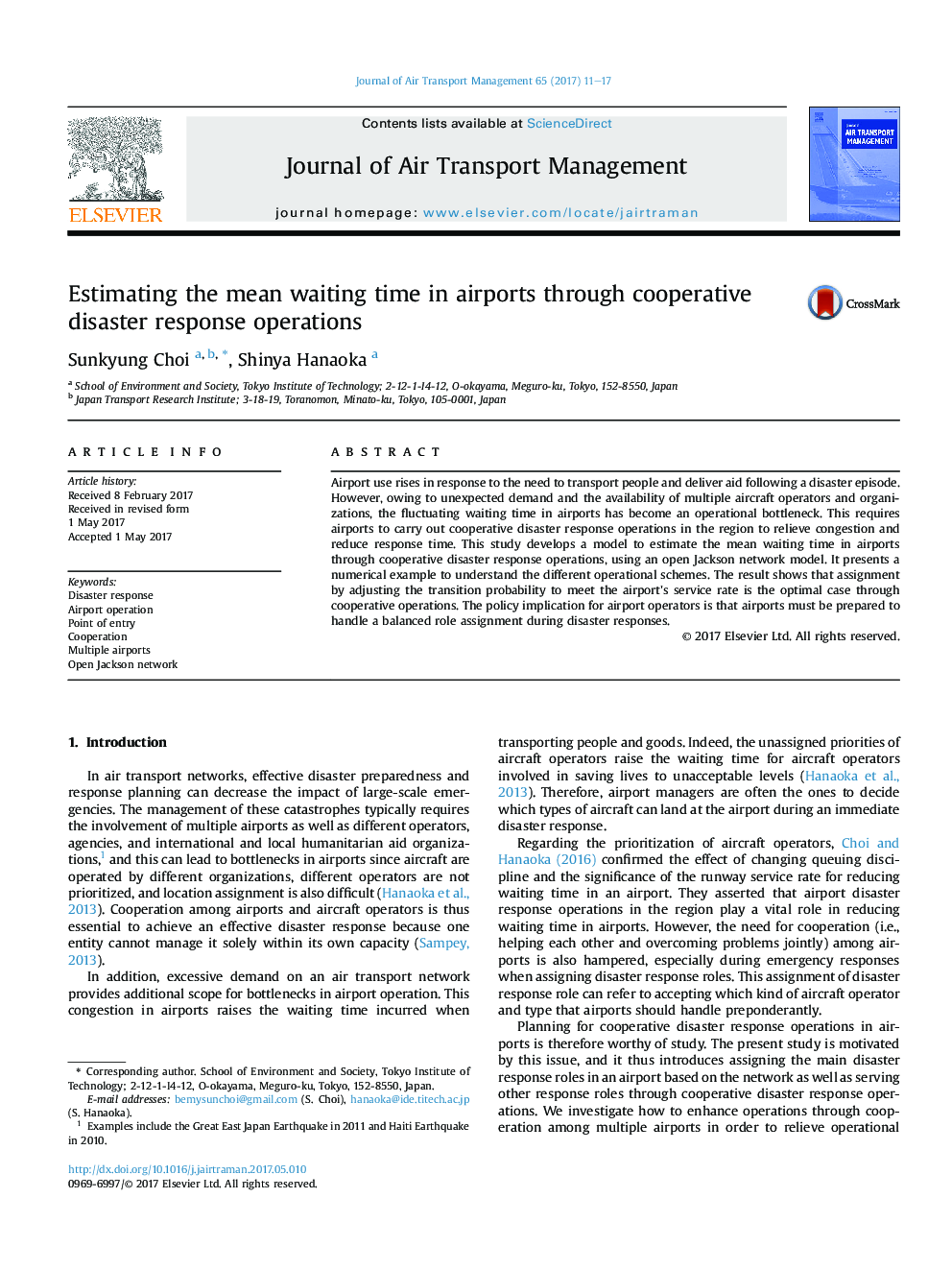| Article ID | Journal | Published Year | Pages | File Type |
|---|---|---|---|---|
| 5111512 | Journal of Air Transport Management | 2017 | 7 Pages |
Abstract
Airport use rises in response to the need to transport people and deliver aid following a disaster episode. However, owing to unexpected demand and the availability of multiple aircraft operators and organizations, the fluctuating waiting time in airports has become an operational bottleneck. This requires airports to carry out cooperative disaster response operations in the region to relieve congestion and reduce response time. This study develops a model to estimate the mean waiting time in airports through cooperative disaster response operations, using an open Jackson network model. It presents a numerical example to understand the different operational schemes. The result shows that assignment by adjusting the transition probability to meet the airport's service rate is the optimal case through cooperative operations. The policy implication for airport operators is that airports must be prepared to handle a balanced role assignment during disaster responses.
Related Topics
Social Sciences and Humanities
Business, Management and Accounting
Strategy and Management
Authors
Sunkyung Choi, Shinya Hanaoka,
